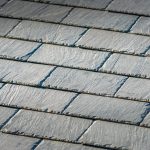Proposed removal of BS 476:22 for fire doors will mean more vigilance around hardware protection

 The proposal for the removal of the national classifications, including BS 476:22, for fire doors from Approved Document B, will have significant implications on fire door testing and intumescent hardware protection, says Henry Rowden, Technical Manager at Vanquish hardware Protection.
The proposal for the removal of the national classifications, including BS 476:22, for fire doors from Approved Document B, will have significant implications on fire door testing and intumescent hardware protection, says Henry Rowden, Technical Manager at Vanquish hardware Protection.
The UK government’s proposal in December to remove national classifications from building regulations will have a significant impact on fire testing and fire safety standards. This change will particularly affect the passive fire protection industry, specifically in relation to fire-resistant assemblies and doorsets.
Traditionally, fire doors in the UK have been tested according to the BS 476:22 standard, which has been in place since 1987 and has not undergone any significant updates in nearly four decades. However, during the Grenfell Tower Inquiry, the longstanding British standards for reaction to fire and fire resistance outlined in Approved Document B came under intense scrutiny and were found to potentially have flaws.
It has been determined that adopting a more robust and up-to-date internationally recognized standard for fire safety products is necessary. Currently, there are two main testing standards for fire-resisting door assemblies in the UK: BS 476:22 and BS EN 1634-1. Both standards describe the test methods used for full-scale doorsets. Although they follow the same time/temperature curve, there are slight differences. In EN 1634-1 testing, the plate thermocouples used are slightly insulated, requiring the furnace to be driven harder to achieve the same temperature.
Additionally, the neutral pressure plane (where pressure changes from positive to negative) in the EN test is positioned 500mm lower from the finished floor level compared to the BS test, making the door more susceptible to warping. Considering EN 1634-1 as a more rigorous and reliable standard, the UK government argues that the widespread adoption of the European classification into BS has made the national classification obsolete.
Most fire doorset manufacturers have traditionally tested their products to BS 476:22 because, until recently, it was deemed sufficient by building regulations and was the less demanding of the two tests. Conducting fire tests is costly, amounting to thousands of pounds per test, so businesses often chose to test to the British Standard as there is also little evidence to suggest that fire doors tested to the European Standard are any better at preventing fire-related deaths or damage to property.
On the other hand, hardware manufacturers almost always test their products to the EN 1634-1 standard because door hardware must be CE marked, necessitating testing to the European standard. This discrepancy can lead to inconsistencies and confusion, especially regarding intumescent hardware protection. High-quality doorsets tested to BS 476:22 can pass without the use of intumescent hardware protection on certain components. For instance, a 30-minute doorset tested to BS 476:22 typically requires protection only on the strike plates and can be tested without intumescent hinge pads or intumescent material around the lock body.
However, when hardware manufacturers carry out fire-resistant testing according to EN 1634-1, they almost always include intumescent protection for all rebated hardware. This is because the EN test is considered more stringent, and it’s not worth risking the economic investment of each fire test for the sake of a few pounds’ worth of intumescent material.
Doorset manufacturers also tend to include intumescent hardware protection for any door tested to EN 1634-1 due to the same reasons. The removal of the BS standard will result in a significant increase in demand for intumescent hardware protection, as it is crucial to ensure the integrity of the fire door at its weakest points.
The majority of doorset and building associations have concluded that the elimination of national classifications will have a severely negative impact on the industry, particularly due to the substantial amount of re-testing required. For some companies, this could pose a financial impossibility. Moreover, with a high demand for fire-resistance testing in the country, there are concerns that test houses will be unable to handle the increased workload, potentially causing significant delays in completing the testing process.
At Vanquish we have an in depth understanding of intumescent hardware protection and we have first-hand experience in testing to both BS476:22 and EN 1634-1. We manufacture our own graphite intumescent compound, FlexiFire, and we are converters of Monoammonium Phosphate (MAP) intumescent. We recognise the differences in these products and how each one is best utilised in hardware protection.
Although it is possible to successfully test fire doors without some intumescent products, when we carry out our own testing, we ensure that we fit it to all rebated hardware as we have seen how it can prevent premature burn through. This is especially true for large items of hardware such as concealed closers and large backset DIN locks.
Architectural hardware products have also become more advanced than when BS 476:22 was introduced. Products such as electronic access controls are far larger than traditional BS sashlocks and often have battery packs that are concealed within the door. Batteries are notoriously unstable at high temperature and can even explode. It is therefore essential to ensure these are adequately insulated in a fire door to be able to reach the desired integrity duration.
We would be interested in hearing how others in the market view the removal of national classifications from building regulations. Please feel free to email info@vanquish-hp.co.uk, visit www.vanquish-hp.co.uk or call 01725 578020.














